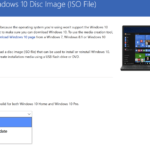When web browser accessing the web server to download web page’s contents, it send an user agent to the web server to identify what kind or type of browser, platform and application is used to view the website. Useragent allows web server to respond separately to different system or apply different behavior and features to different browser.
With the popularity of iPhone soaring high, which sales will surely climb higher with the release of iPhone 3G at ridiculously low price, and advanced sophisticated futuristic iPhone, a lot of content providers have create unique, interesting, and sometimes free contents specifically just for iPhone users. Some websites even prepare an individual special user interface for iPhone user, normally just nicely fit into the screen orientation and size of iPhone LCD.
To access these contents from the desktop or laptop and notebook computer, which has a bigger LCD screen, instead of having to view the web pages on the comparably small screen, user can change the user agent string on the PC web browser. Changing web browser’s user agent to emulate and imitate as iPhone usually work because this is the check most web servers depends on.
To use Firefox web browser as if it’s the Safari browser inside the iPhone, follow this guide to change the user agent of Firefox. The user agent string to use is as follow:
For general.useragent.override in about:config preference:
Mozilla/5.0 (iPhone; U; CPU like Mac OS X; en) AppleWebKit/420+ (KHTML, like Gecko) Version/3.0 Mobile/1A543 Safari/419.3
For User Agent Switcher add-on:
Description: iPhone
User Agent: Mozilla/5.0 (iPhone; U; CPU like Mac OS X; en)
App Name: AppleWebKit/420+ (KHTML, like Gecko)
App Version: Version/3.0
Platform: Mobile/1A543 Safari/419.3
To fake iPhone’s Safari using Safari in Windows or Mac OS X, run Safari, click on Edit -> Preference, then go to Advanced tab. Check the checkbox for Show Develop menu in menu bar option.
Exit from the Preference dialog window, a new “Develop” menu will show in the menu bar. Click on Develop, and then select User Agent in the pull down menu. Click to select Mobile Safari 1.1.3 – iPhone.
Now the both Firefox and Safari browsers is surfing the web by telling everybody that you’re indeed using an iPhone to connect to Internet.




